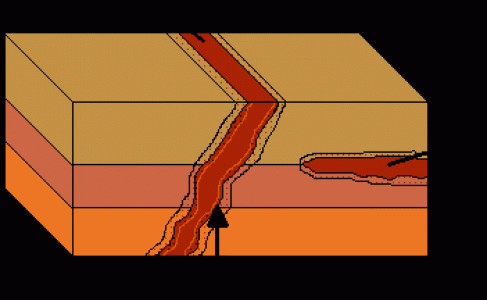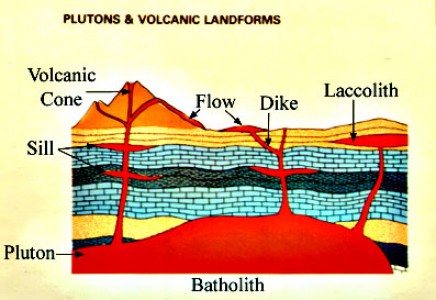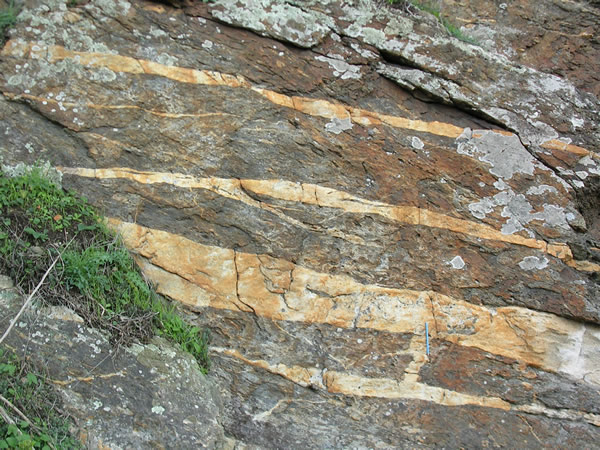Difference between Dike and Sill

Dike and sill are geological terms used to describe the formation of igneous rocks. These rocks are formed when hot magma is released from the mantle of the earth, but fails to reach the surface like lava, which erupts from volcanic openings. Thus, in simple words, dike and sill can be referred to as cooled magma that could not escape from the surface of the earth. This cooled magma forcibly enters, penetrates, and embeds itself in the layers of another rock or land form, to form new rocks named dike and sill.
The reason behind the formation of these two rocks might be the same, but there are a number of differences between the two, which are very important as far as volcanology is concerned. The first and foremost difference between the two is how they penetrate pre-existing rocks. When the magma intrusion is vertical, the resulting formation is called a dike, and when the magma intrusion cuts through another land or rock form horizontally, a sill is formed. The former are discordant intrusions whereas the latter are harmonious or concordant intrusions.
These igneous rocks are formed due to constant pressure and force from one point of origin. In the case of dikes, the starting point lies below the forming dike, while in the case of sills, this point of origin is either on the right or left side of the forming rock.
Both dikes and sills can be sedimentary or magmatic in nature, but they are always younger than the surrounding rocks. Furthermore, these volcanic intrusions are slimmer and wider than the surrounding rocks, and can easily be distinguished from their surroundings on the basis of their colour.
Since sills exist parallel with the land or rock form, they can be harder to identify on the basis of colour difference. Dikes, however, can easily be located between bedding planes and rocks. Proper testing is required to check whether a plane is a sill intrusion or original rock.
Instructions
-
1
Dike
A dike is a geological formation that is formed when magma from the hot core moves vertically upward through cracks, fissures, or joints, but cools down before reaching the surface of the earth. It is a subterranean geological formation that remains hidden from the human eye for thousands of years, and becomes visible after the constant weathering and erosion of the top layers.
Image courtesy: indiana.edu
-
2
Sill
A sill is an igneous rock that is formed as a result of the crystallization of molten magma, flowing horizontally beneath the Earth’s surface. A sill is formed when the molten magma does not find a way to continue its upward journey, and thus it starts flowing horizontally. A sill can be hundreds of kilometres long, but is never more than a couple of meters in width.
Image courtesy: pi.ingv.it







